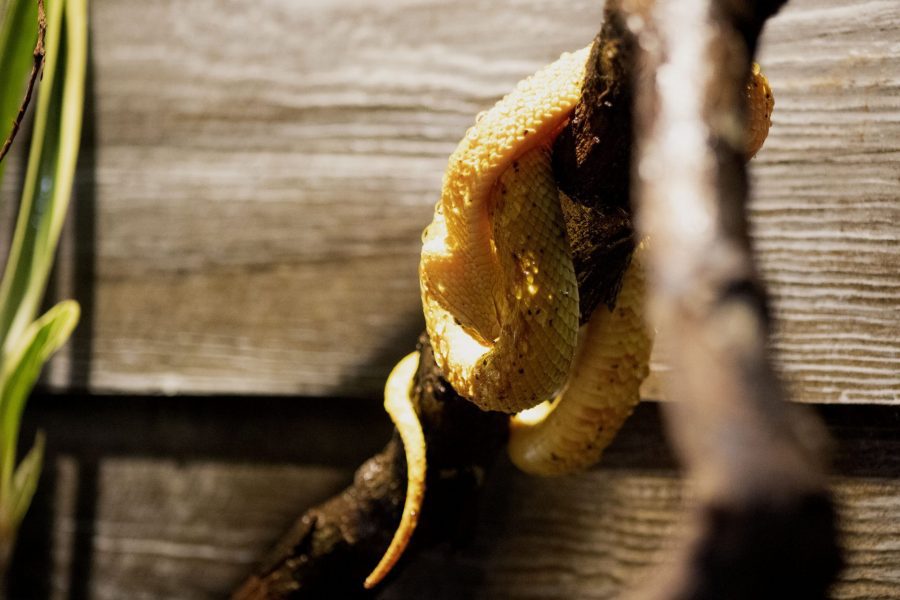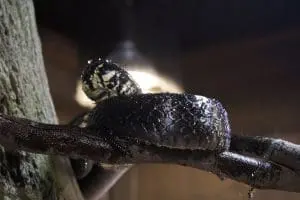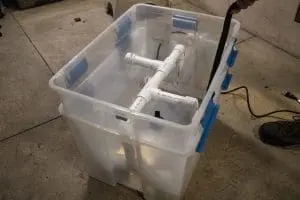

This eyelash viper is drinking water off of its body – a natural behavior for arboreal snakes.
Have you ever wondered how snakes drink water?
Snakes like our African rock pythons and Burmese python can drink from standing water by dipping their head into the pool and slowly chugging it, but these standing pools are rare for snakes that live in trees (arboreal) or those who live in arid places.

Snakes often drink droplets from rainwater or mist off of their own scales.
These snakes depend on rain or mist for most of their water intake. Some have specialized scales to collect water droplets to drink off their body drop by drop, said Zach Marchetti, curator of animals. Other snakes have scales that direct water towards their mouths.
So, what’s a snake to do at the Zoo?
Even though we provide standard water dishes for all of our snakes, many of the arboreal species will simply choose never to use them. So, to encourage those natural behaviors, our Herps and Aquatics team makes it rain a few ways for the arboreal snakes who call our Venom House home! Misting snakes offers one way to get them hydrated – as does a trip to the “rain chamber.”

Our animal care team sometimes puts snakes in this rain chamber to give them a longer soak.
This rain chamber is essentially a plastic container with a PVC pipe system attached to the lid and a PVC perch perfect for a thirsty snake. Water is pumped through the pipes which have holes drilled throughout, causing it to rain over the snake inside.
The chamber is primarily used by our emerald tree boas as they tend to need more hydration than other species. A dehydrated snake can have issues defecating or shedding their skin, and over long periods of time can develop kidney issues or other internal problems.
Snakes sitting on the chamber’s perching can be rained on for 10, 20, 30 minutes or even more without someone having to mist them – and without oversaturating their regular habitat. The timeframe depends on how the snake is doing – if they haven’t defecated in a while or are having trouble shedding, they may stay longer in the rain chamber.
With so many species at the Zoo – all requiring different diets, enrichment, habitat space and more – our animal care team often get creative to give our animal residents the best possible care. Our snakes are no exception! To see them in action, pop over to their habitat in Rainforest Revealed on your next visit.
Brevard Zoo is an independent, not-for-profit organization that receives no recurring government funding for our operating costs. Your generous support enables us to continue to serve our community and continue our vital animal wellness, education and conservation programs.